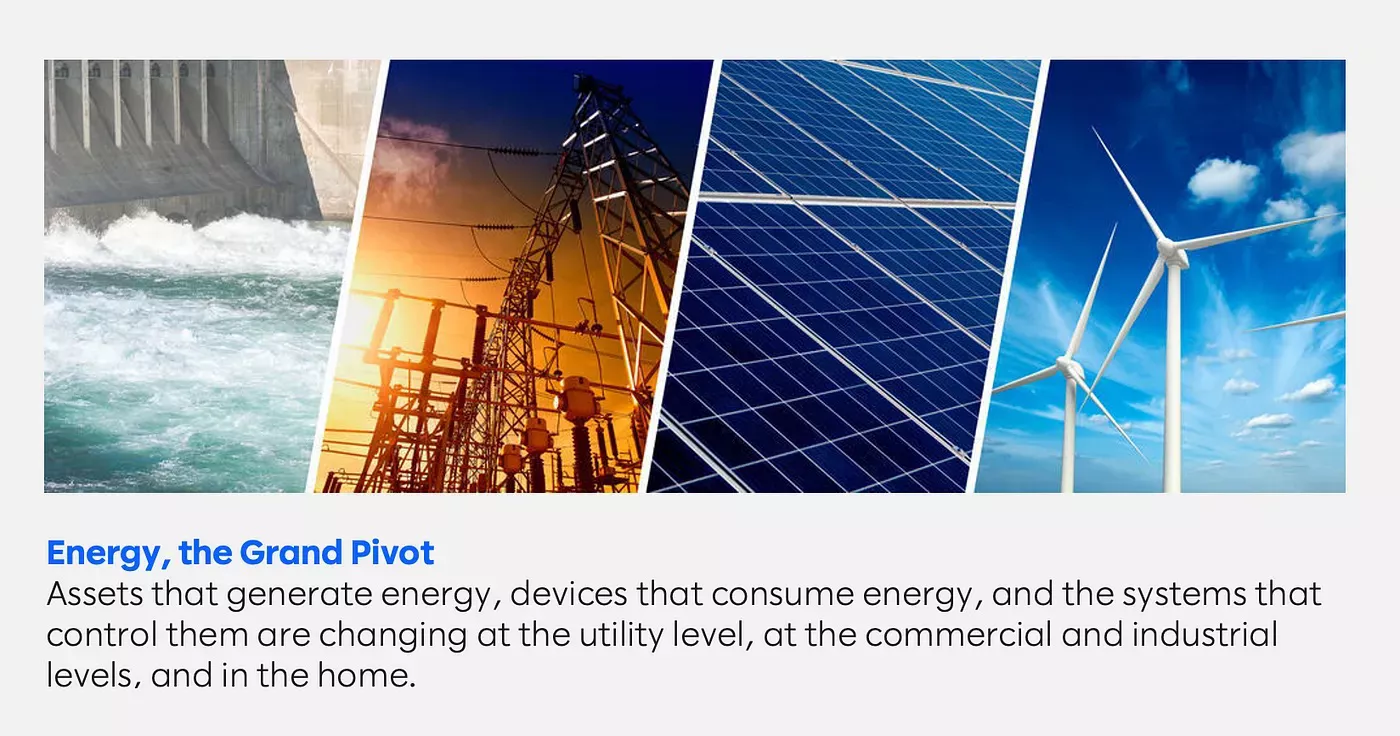New energy: Four pillars define the challenges and opportunities

Global energy companies have been subject to convulsive transitions for more than 150 years, starting with (in many cases) their origins. Shell, for instance, was formed by two brothers who had grown up in the antiques and shell importing business founded by their father. Their merger with Royal Dutch in 1907 was largely driven by the strategic necessity to compete with one of the world’s first and largest multinational corporations, Standard Oil, founded by John D. Rockefeller in 1870. Standard Oil would then face its own convulsion when the US Supreme Court declared it an illegal monopoly in 1911, splitting Standard into thirty-four companies and giving rise to firms including Amoco, Chevron, ExxonMobil, and Marathon Petroleum.

The volatility in the price of crude oil has been equally dramatic, creating operational and financial challenges. In real-dollar terms (according to Deutsche Bank), crude prices approached $150 per barrel in the 1870s (the dawn of the industry), the 1970s (agitated by the Arab oil embargo), and the early 2000s (global economic expansion followed by a recession). Balancing these spikes were sustained periods below (and in some cases way below) $50 per barrel. Given the high capital requirements to extract and refine crude oil, the extended time between investment and return, and the intense impact of global political winds, this is an industry that has had to manage change and risk perhaps more than any other.
In contrast, the power business, as a matter of practical necessity, has been subject to a calmer evolution—until now.
Starting in 1882 with Edison’s first central power plant (Pearl Street Station in lower Manhattan), the largely regulated market looks much the same today as it did then: wires draped between wooden poles carrying electrons generated in real-time to homes and businesses. Natural gas, coal, and refined crude products (like heating oil) still fuel most of today’s power plants, but the share has fallen to about 60% (natural gas ~38% and coal ~22%, according to the EIA), supplemented by nuclear (~20%), hydro (~7%), and increasingly, solar and wind (~10%).
What is “new energy” and what are its challenges and opportunities?
We see four thematic pillars that define the foundation of new energy:
1. Decarbonization
The decarbonization of the global economy has become a universally accepted objective. For the energy firms that extract and refine hydrocarbons, this means a complete transition to new products. Hydrogen is one target, but if it is produced from hydrocarbons (like natural gas, which is largely methane), they must find an economical way to capture and sequester the carbon that is stripped away. For power generators that currently burn hydrocarbons, this likely means a faster transition to solar and wind assets. Existing nuclear power plants may find their lives extended as their 24/7/365 emission-free generation could significantly lower the need for extended battery storage. Also, fuel cells, which convert hydrogen to electrons through an electrochemical process much like a battery, become more attractive in a hydrogen economy.
2. Balancing intermittency
Even with just ~10% of the current US generation stack comprised of solar and wind assets, the effects of intermittency are significant. Daily public service announcements in California urge consumers to avoid using appliances as the sun begins to set and solar generation falls to zero. Real-time power prices in Texas fluctuate dramatically as a function of wind speed, with some 30GW (according to EIA) of wind turbine capacity across the state — nearly 40% of peak summer demand. Battery storage assets, which can respond instantly to demand, would appear to be a logical solution, but even the most economic technologies (e.g., Li-ion batteries) are still too expensive, and the market mechanisms that reward battery storage operators are based on the Old Energy paradigm. After batteries, fast-start gas-fired turbines would be next in line for balancing intermittency, but it remains to be seen if hydrogen-fired turbines will be their de-carbonized successors.
3. Electrification of transport and appliances
The rise of electric vehicles, from a base of ~2% of US new car sales in 2020, may be the single greatest incremental demand driver for utilities, creating both challenges (to existing transmission and distribution infrastructure) and opportunities (significant revenue growth). Major home appliances that may have burned heating oil, fuel oil, natural gas, or propane will likely be replaced by electric appliances.
4. Consumer-level integration and control
An electric vehicle (EV) in the garage is both a mode of transportation and a potential backup power source for the home, perhaps complementing solar panels on the roof or integrated with a community solar array just a few miles away. Many home appliances like heaters, air conditioners, pool pumps, and clothes dryers are already internet-enabled, so controlling these according to preferences pre-selected by the homeowner (or suggested by a smart speaker, like Alexa) is the next logical step. When looked at holistically, this has all the ingredients of a home micro-grid, which operates whether the utility grid is up or down.
These four themes look nothing like the challenges faced previously by global energy companies or regional energy generators and utilities. In many cases, the skillsets and technologies required appear to be more native to Palo Alto or Seattle than Houston. The key to success may well be the blending of both. In fact, many recent press releases from oil majors, including Chevron and Shell, seem to indicate a “venture capital” approach to new energy — investing across a broad range of opportunities early with the expectation that only a few will succeed and garner most of the investment pool.
Similarly, but approaching from the demand side, tech firms’ investments in a carbon-free generation to power their energy-intensive data centers and sprawling office complexes are likely just the beginning of their expansion into new energy.
This blog post was originally published here.


